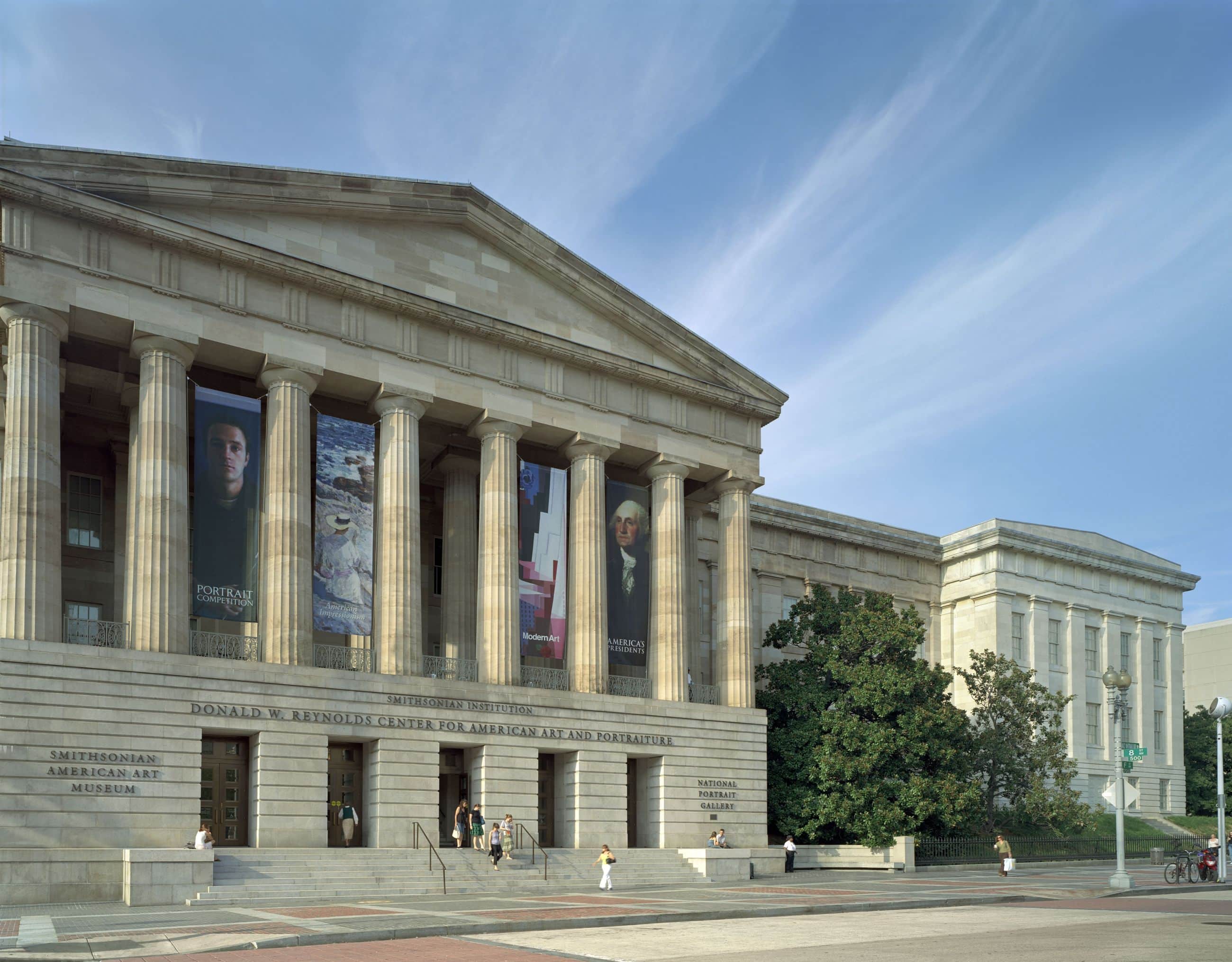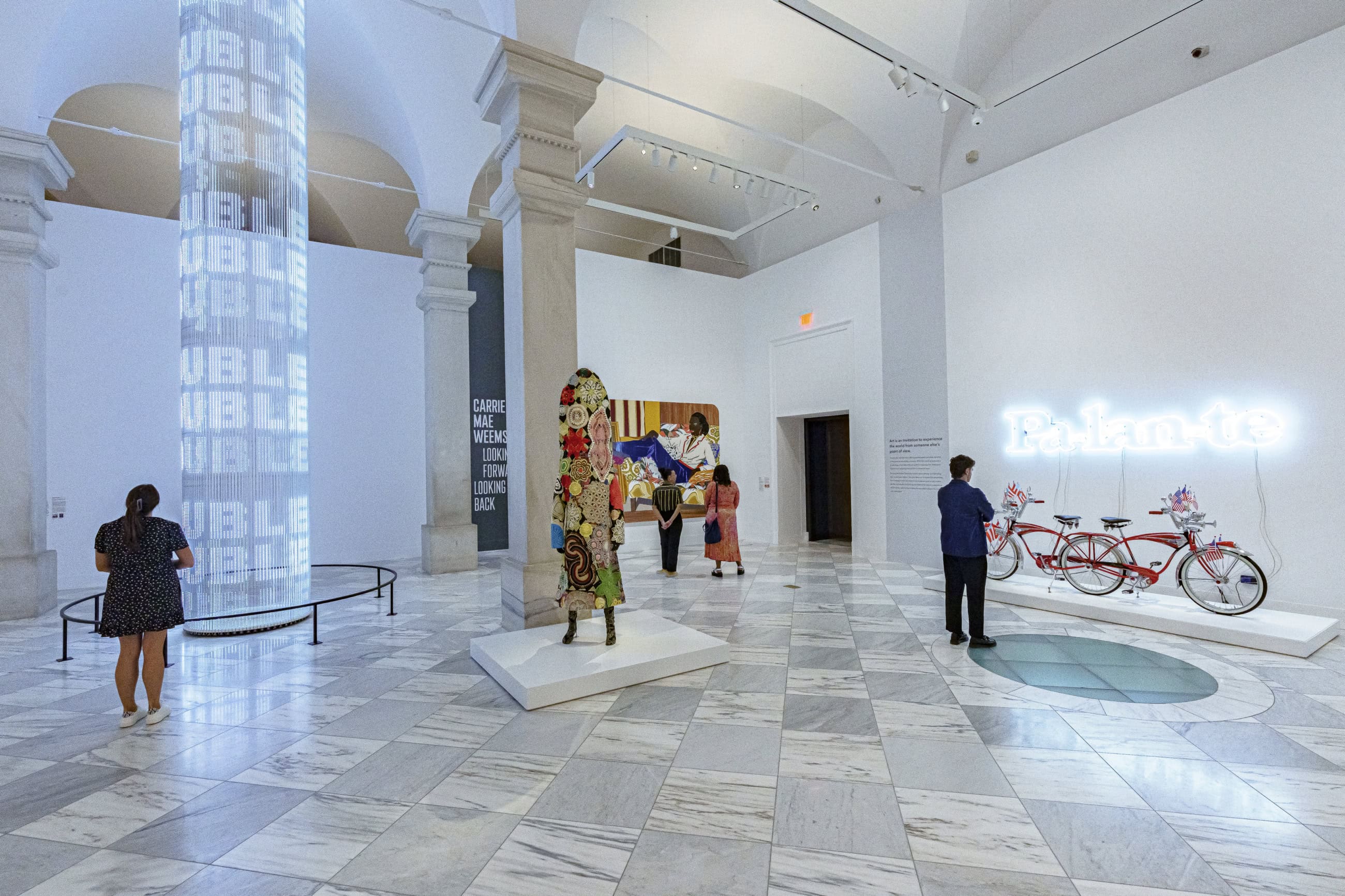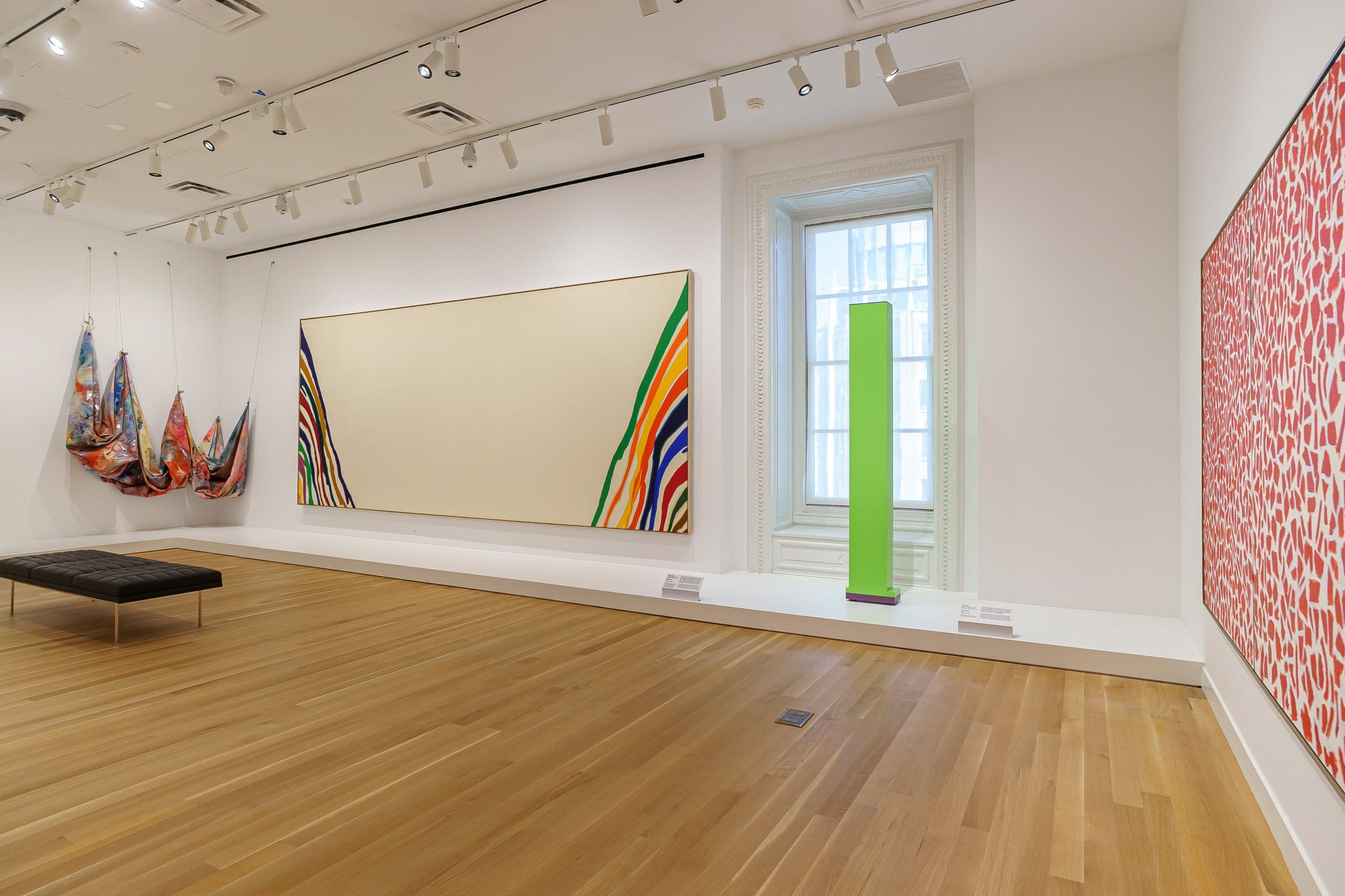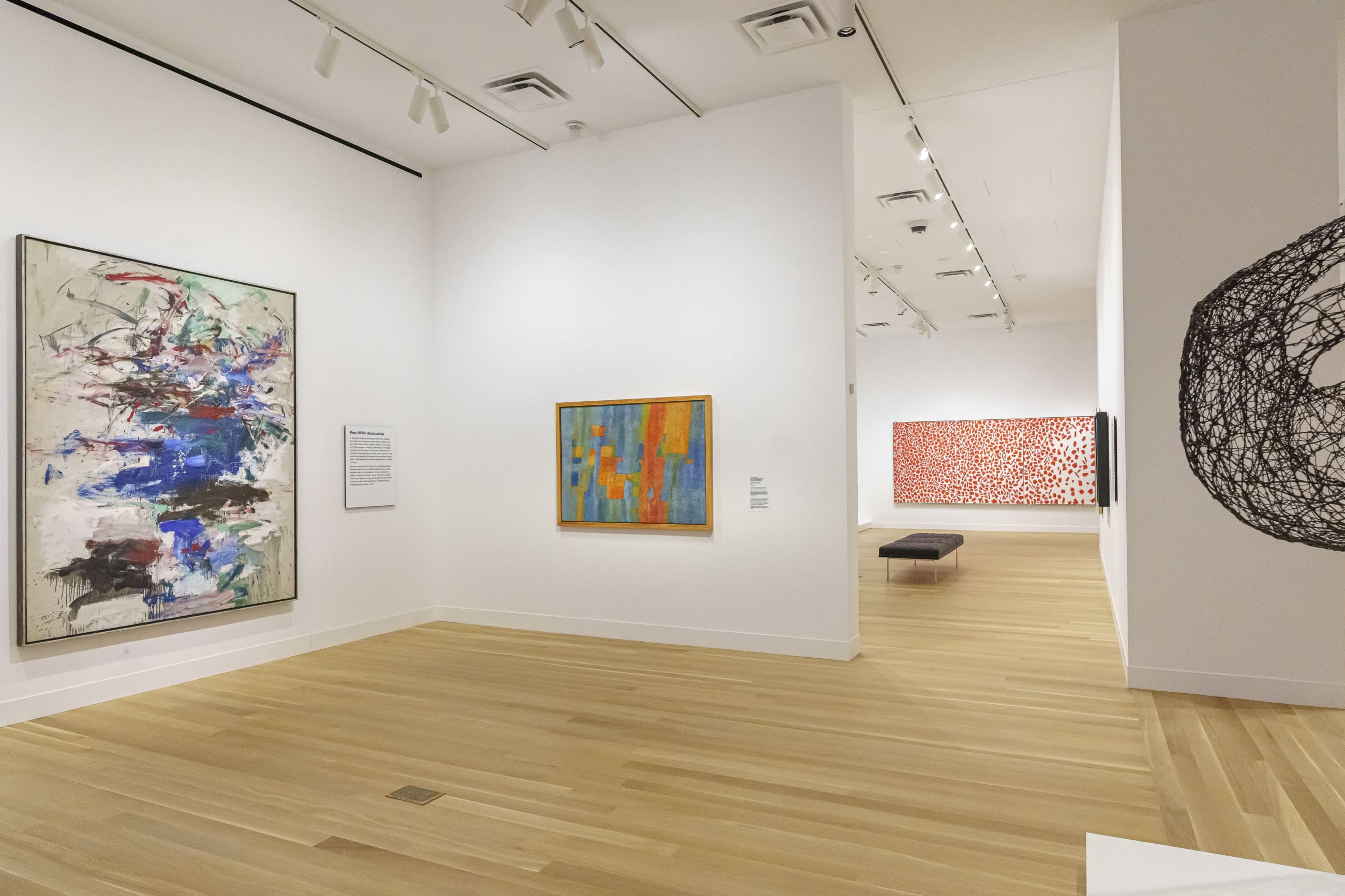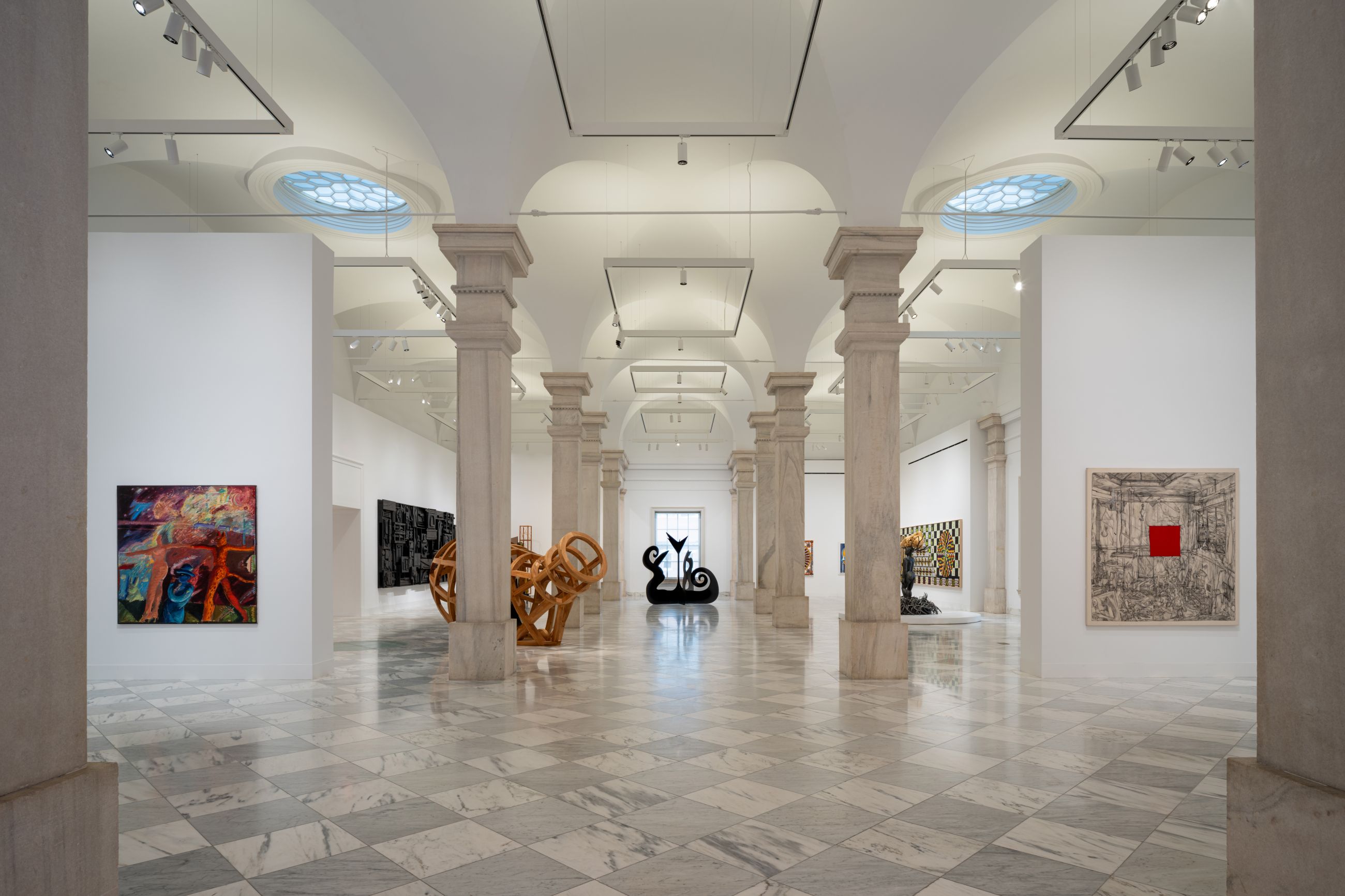
The renovation of the Smithsonian American Art Museum’s galleries for Modern and Contemporary Art has greatly enhanced the display of the collection by doubling the amount of wall space and creating new dynamic circulation patterns to reinforce the fluidity between artistic disciplines and historical narratives. The re-installation acknowledges the multifaceted narratives, identities and artistic practices that exist in the United States by including the often-overlooked histories and contributions by Asian American, Black, Indigenous, Latinx, LGBTQ+ and women artists, part of a museum-wide effort to provide a more expansive view of American art.
Read more Close
Located on the 3rd floor of the 1855 building, the Lincoln Gallery along with the adjacent North Gallery comprise 22,000 sf. Key architectural details, including tall columns, pillars, portal skylights and vaulted ceilings have been highlighted in sensitive balance to the art. The new wall layout allows for a more open north-end and center aisle, with smaller more intimate gallery moments at the east and west aisles, which provide rooms for more focused display while allowing the art to be in conversation with other objects on display.
Last updated in 2006 as part of a full building renovation, the new galleries feature a new integrated system of suspended track lighting and less intrusive high-wall linear diffusers. Windows have been covered to provide more clear wall space, but others have been left strategically open to provide views to the inner courtyard, or other points of orientation.
A new 1,700 sf multi-media gallery specifically designed to accommodate Time-Based Media artworks and installations is located at the southern end of the floor. The gallery includes sound isolation, a hanging pipe grid ceiling for flexibility of hanging lighting, audio visual equipment and artworks.
- Client:Smithsonian American Art Museum
- Location:Washington, DC
- Size:22,000 sf
- Date:2023
(Photography: Courtesy of Smithsonian American Art Museum. Albert Ting, Ron Blunt, and Timothy Hursley)
